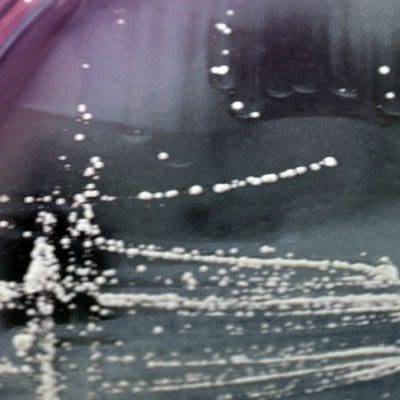Staphylococcus aureus (MRSA) Structure and Physiology
Methicillin-resistant Staphylococcus aureus (MRSA) is a Gram-positive, coccal-shaped, facultative anaerobic bacterium that is responsible for many difficult to treat infections. MRSA is any strain of Staphylococcus aureus that has developed a resistance to beta-lactam antibiotics through the process of natural selection. Beta-lactam antibiotics include penicillin, methicillin, dicloxacillin, nafcillin, oxacillin, and cephalosporins. Resistance does not increase the virulence of the microbe but does make it more difficult to treat.
Staphylococcus aureus (MRSA) Transmission and Disease
MRSA causes the most problems at hospitals, prisons, and nursing homes. Potential sites of acquired infections from MRSA include: open wounds, intravenous catheters, respiratory tract, and the urinary tract. Healthy individuals can carry MRSA with no symptoms from a few weeks to many years. MRSA can be detected by performing a swab screening. These swab screenings have been found to minimize the spread of MRSA in hospitals in the United States, Denmark, Finland, and the Netherlands. After 72 hours from the initial topical symptoms MRSA can take hold of the tissue and become resistant to treatments. Initial symptoms of MSRA are small red bumps, fever, and rashes. After a few days the painful bumps will then grow until eventually opening into deep, pus-filled boils.
Staphylococcus aureus (MRSA) Disinfection
MRSA bacteria are resistant to drying and can therefore survive on surfaces and fabrics for an extended period of time and therefore makes this bacteria an excellent representative for antimicrobial efficacy testing on surfaces.
Notes
References
- Rajkumari N, Mathur P, Bhardwaj N, Gupta G, Dahiya R, Behera B, Misra MC. Resistance pattern of mupirocin in methicillin-resistant Staphylococcus aureus in trauma patients and comparison between disc diffusion and E-test for better detection of resistance in low resource countries. J Lab Physicians. 2014 Jul.
- Hesje CK, Drlica K, Blondeau JM. Mutant prevention concentration of tigecycline for clinical isolates of Streptococcus pneumoniae and Staphylococcus aureus. J Antimicrob Chemother. 2014 Oct 16.

